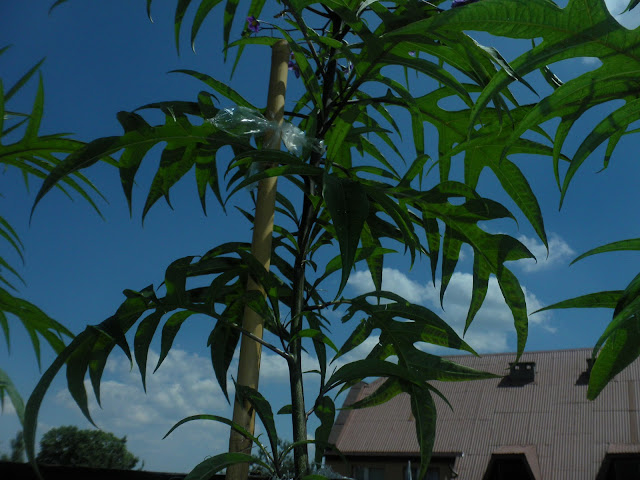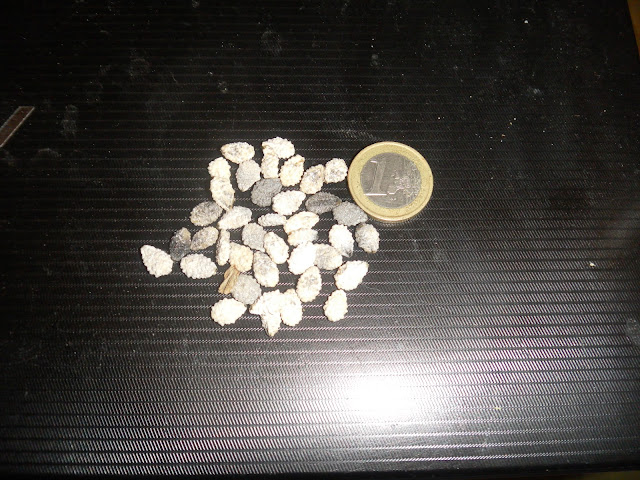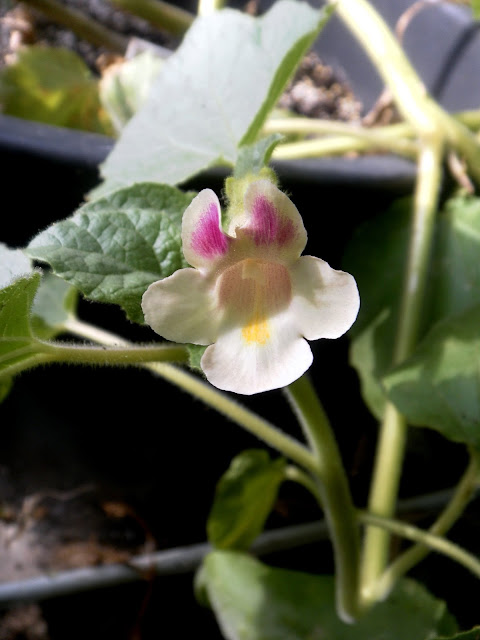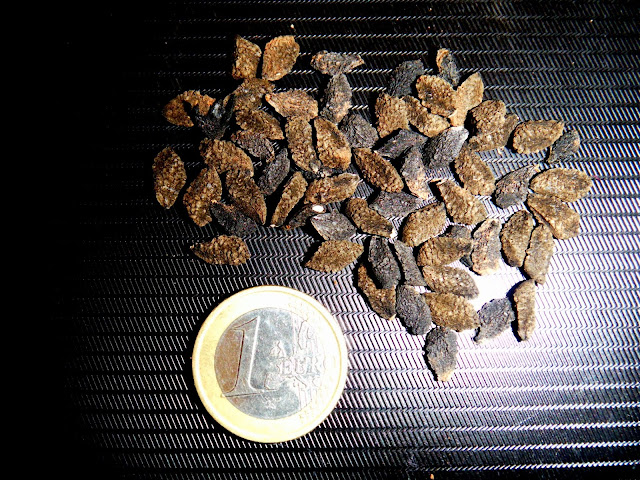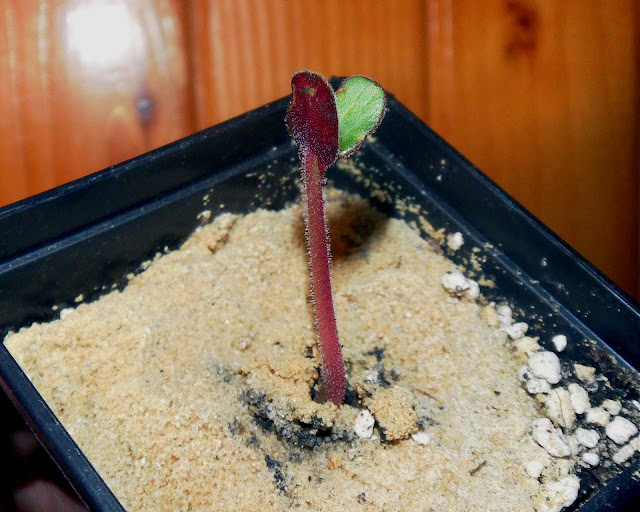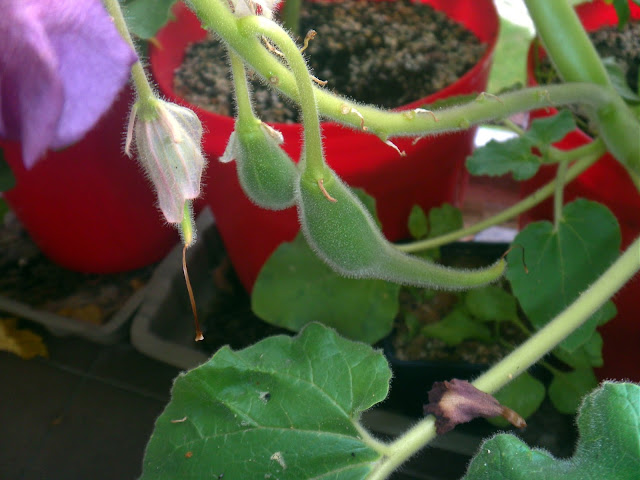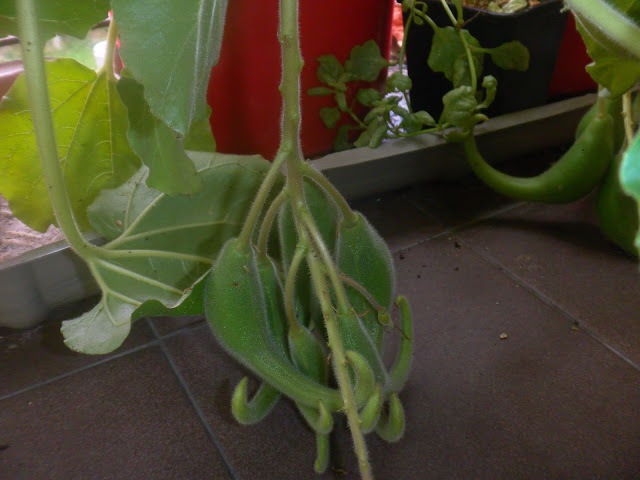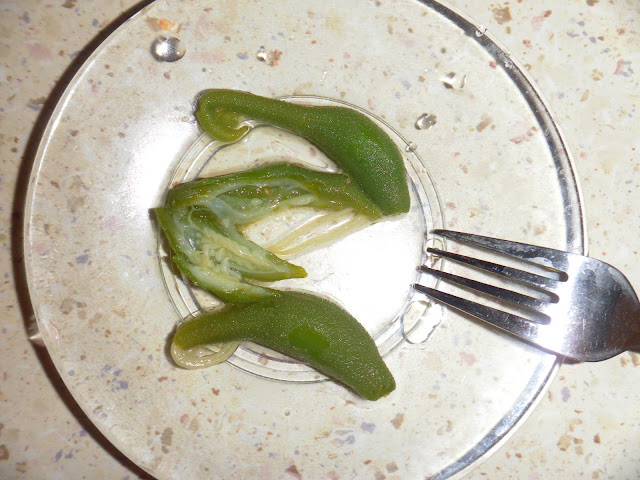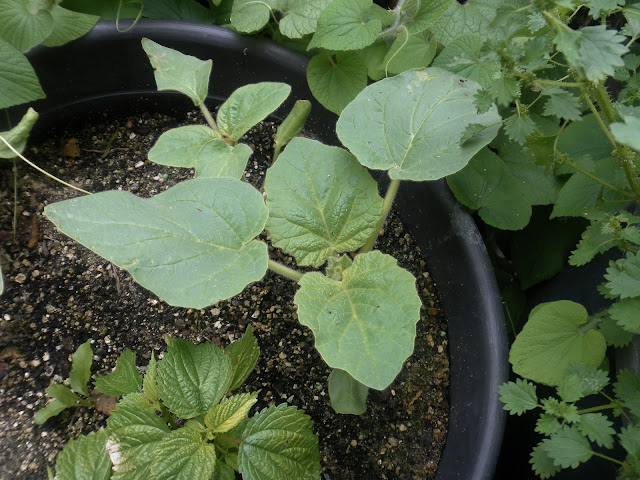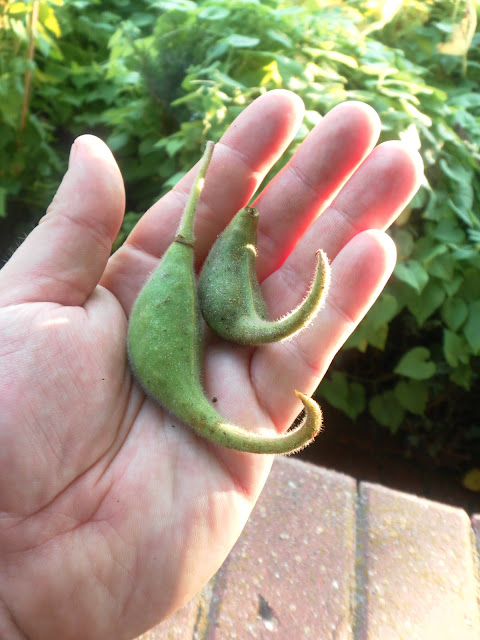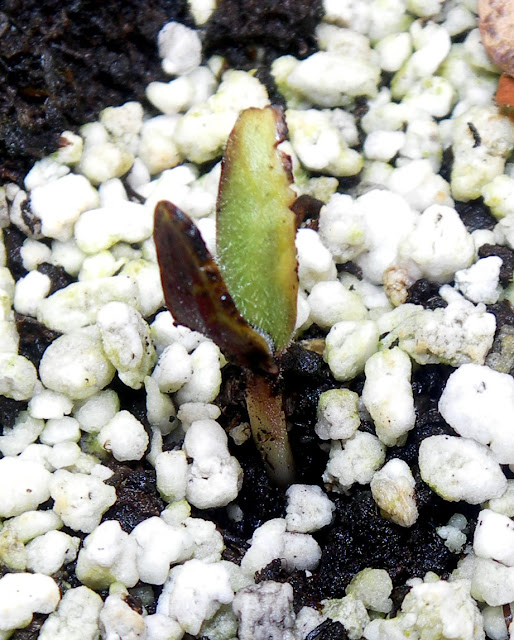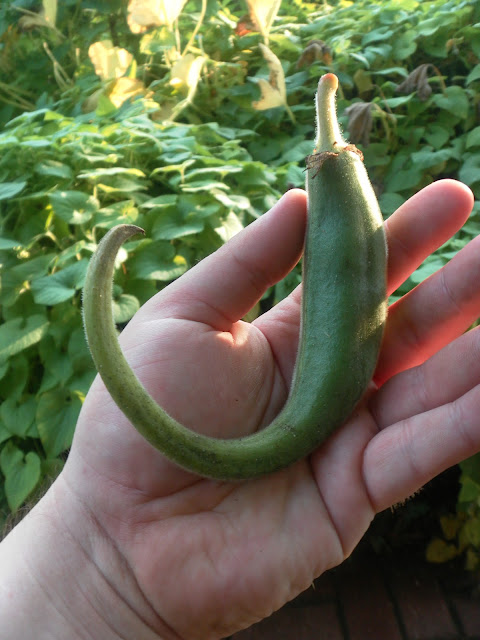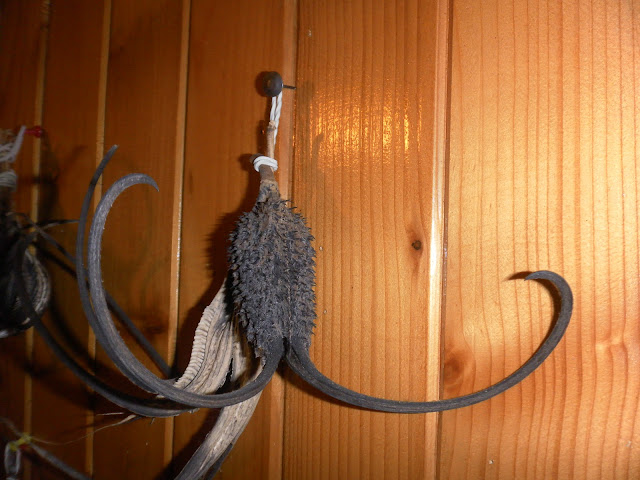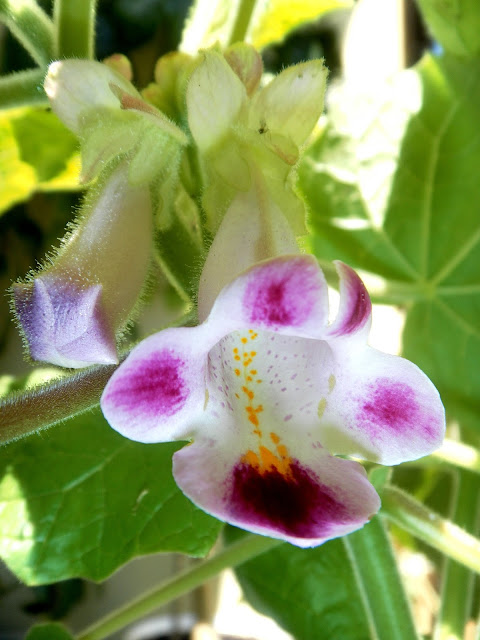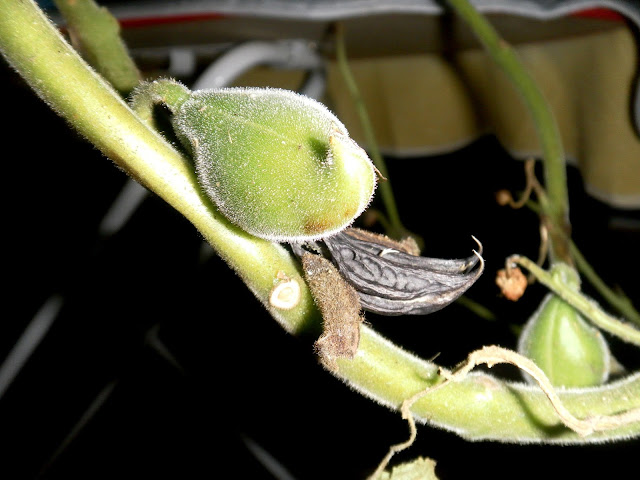Devil's
Claws (Unicorn Plants) belong to American plant family Martyniaceae.
In this taxon there are very original and useful species and numerous
of them can be easily grown in the gardens or balconies in temperate
areas. There are only 5 genus and 16-20 species in the family. The
most characteristic for them all there is the appearance of fruit –
it is fleshy, viscid, pubescent drupe (often described as „pod”)
with long (in genus Proboscidea and Ibicella) or short (in genus
Martnia, Craniolaria and Holoregmia) appendix, which breaks when ripe
and unveil hard woody drupelet. Then the rostrum (part of drupelet
which was inside of appendix) break for 2-5 parts which curve and
become similar to claws. These claws help to transfer the seeds on
legs of animals.
Proboscidea
sabulosa (Sand
Dune Unicorn Plant) is the smallest species in genus (more
photos are bellow)
Martyniaceae
species are protocarnivorous i. e. they catch the small insects (to
viscid surface of leaves or stems) but do not digest them. Probably
formerly, in early times, some present carnivorous plants were
protocarnivorous and as a result of evolution they started to
„eating” the animals.
Martyniaceae
have very ornamental large colorful Gloxinia-like flowers and can be
very ornamental. The drupelets are use in basketry and to making very
interesting artistic sculptures (often very fairy as gargoyles,
dragons, fantastic birds, unicorns etc.).
The
young fruits of numerous species and theirs seeds (sometimes also
leaves or roots) are edible. The fruits can be pickled – they are
bitter but very tender and delicious. The seeds should be boiled
before eating. They taste like sunflower seeds and have similar size
but softer seedcoat. Immature seeds can be eaten raw.
The
names of taxons which I tried to grow are bolded and below of each
description there are visible their images. All photos were made by
me in my garden and balcony in last a few years.
To
the largest genus in the family – Proboscidea – belongs 7 species
mainly annual herbs. I tried to grow 6 of them (5 with success so
far). All species occur in North and Central America (except one
which grows also in Peru).
Growing
details:
All
Martyniaceae love warm temperatures, fertile soil and much of
sunlight. Some forms of the annual species as P. fragrans, P.
parviflora, P. louisianica, P. sabulosa, P. triloba or Ibicella lutea
are easy to growing in very warm spots in gardens or in medium size
pots outside. They need short growing season (often only 3-4 months).
But other forms/varieties of the same species are more difficult and
later. P. sabulosa and P. althaeifolia need perfectly well drained
sandy soil. Martnia sould be sown early (in March) inside and
replanted outside after last frost and is very late (ripens in mid
autumn). Others can be sown outside in May and fruits are usually
ripe in September. The flowers can be hand-pollinated, but better
make it the insects (bees etc.).The flowers of Proboscidea species
have an interesting feature - the open stigma of the pistil closes
quickly when it is touched during pollinating.
Propagation:
All
species which I grown (maybe except Martynia annua) need the
fluctuations of temparatures to seeds germinating so they should be
sown outside or (if sown inside) on a heater. Some species are very
easy to germinate as for example Proboscidea fragrans, P. parviflora
subsp. parviflora var. hohokamiana or Ibicella lutea but some other
need a pre-treatment before sowing. I discovered how to do it! The
seeds of such difficult taxons should be soaked by 3-4 hours in
solution of GA3 (300ppm) or (probably – I a not sure – I always
used the hormone) clear water. Next it is needed to remove a
seed-coat and seed-membrane (which covers young cotyledons and
inhibits germination). Then seeds should be sown covering them in
thick layer of powdered charcoal (to prevent of rotting the naked
embrios). There is also one other method which I tested only in case
of P. sabulosa so far – the seeds can be sown in cool cellar in
pots in early March to germination after long time in May outside
when the weather becomes warmer. In the case of Martynia seeds (which
are very hard to removing from drupelets – you need use the nail
pliers etc.) good is first method, but the soil substrate to sowing
should be very special (composed only of sterile sand, powdered
charcoal and vermiculite) because the germinating seeds are very
susceptible to rotting.
Note:
The
plants which belongs to family Martyniaceae are sometimes confused
with one South African species - Harpagophytum procumbens (Grapple
Plant, Wood Spider, Devil's claw) . The reason of it is the
similarity of common names of both taxons. H. procumbens belongs to
sesame family (Pedaliaceae) and is well known as a famous medicinal
herb.
Descriptions
of species:
The
most widely used and highly prized species is Proboscidea parviflora
ssp. parviflora (Doubleclaw, Red Devil's Claw, Desert Devil's Claw)
native to south USA and Mexico. It is cultivated as large-fruit (to
16 inches = 40cm long) and white-seeds variety - var. hohokamiana (as
edible and basketry plant). Wild - var. parviflora has black seeds
and something smaller fruits. There are met 2-clawed and 3-5-clawed
forms of both varieties. P. parviflora as species has the largest
fruits in the family. The flowers are white or pale pink and have
characteristic two purple spots in upper part of corolla. I tried to
grow three named cultivars of white-seed variety: „Giant
Multiclawed” (3-5 clawed), „Tohono O'Odham” and „Paiute”.
The first one was very easy and early. The other ones were late and I
had not a success with them. The multiclaw form (3-4 clawed) of
black-seed variety, which I also grown, fruited less abundant but was
also easy and rather early.
Proboscidea
parviflora subsp.
parviflora var.
hohokaiana "Giant
Multiclawed":
The
flower have 2 purple spots on upper lobes of the corolla
Fruits
are quite large
The
flesh cover of ripe fruit breaks and fall down and there become
visible the woody drupelet.
The
ripe dry drupelets
The
seeds of this subspecies are white or gray.
Proboscidea
parviflora subsp. parviflora var. hohokaiana "Tohono
O'odham":
Proboscidea
parviflora subsp. parviflora var. parviflora "Multiclawed":
The
drupelets of this variety of P.
parviflora subsp.
parviflora var.
parviflora
are similar to "Giant multiclaw" variety but they are
smaller
There
are two other subspecies of P. parviflora: subsp. gracillima
and subsp. sinaloensis. They have more flowers in
inflorescences and occur in Mexico.
The
most popular in trading is P. louisianica
(Common Unicorn Plant, Devil,s
Claw, Ram's horn). It is the most northern species in wild state
(grows even in Canada). The seeds are brown or black, fruits medium
size with two hard claws. It creates large pale pink or white flowers
with yellow spot and small purple dots. I grown the two wild strains
from Texas
Proboscidea
louisianica:
Seeds
of Proboscidea
louisianica are brown or
almost black colored
The
young seedling
Flowers
are pale pink or white, without purple spots
The
fleshy drupes
The
ripe dry drupelets
The
closest cousin to the last one there is P. fragrans
(Sweet Unicorn Plant, Ram's Horn,
Devil's Claws, Aphid Trap) sometimes described as P.
louisianica subsp.
fragrans.
It differs from previous one by purple flowers and something smaller
and softer drupelets. Not only fruits and seeds but also the leaves
of this taxon were eaten boiled. This plant blooms so profusely that
can be grown as petunias on balconies or hanging pots.
Proboscidea
fragrans:
The
young plants
The
flowers are purple and fragrant
It
can be a very ornamental balcony plant (not worse than petunias)
The
young fruits are edible cooked
The
plants can be quite large
The
young boiled drupes
The ripening
drupes
The
ripe dry drupelets
The
smallest fruits in the genus Proboscidea
creates P. triloba
(Mexican Devil's Claw, Cat's Claw,
Uñas de Gato, Torito). They are not big but very bulgy and have
relatively short appendix. Flowers, on long pedicels, are similar to
P. louisianica.
The leaves are sometimes trilobate (but not always). There are two
varieties: var. triloba and
var. diversifolia.
The last one is more rare in wild state (in Mexico) than first. This
species grows sometimes as a perennial in warmer areas but more
commonly is an annual.
Proboscidea
cf. triloba:
(my plant it is probably not a clear species - it has dentate leaf
margin, dark spots on upper petals, cordate for deltate-shaped leaves
(often 5-lobed) as P. triloba subsp. triloba but the colour of
flowers is paler and fruits are larger then in descriptions of this
species)
The
young seedling
The
leaves have dentate edge and flowers have purple spots
The
plants can be quite large
Drupe
has an inflated body and a short appendix
The
ripe dry drupelets
There
is also other, very little known species – P. sabulosa
(Sand Dune Unicorn Plant). It is
smaller plant which very differ of other species – it has
relatively large, long, narrow seeds and small long purple flowers
with original appearance. The fruits are something similar to next
(look at below) species and drupelets have 4-angular lateral edge of
claws (other species have rounded edge). It needs sandy fertile moist
soil. It is very rarely met in wild state (only in south-west Texas,
New Mexico and northern Mexico).
Proboscidea
sabulosa:
The
seeds are narrow and long (other than in rest of species)
The
young seedling
Older seedling
The
flowers are much
other than in rest of species of this genus
This
species plants are very small
The
fleshy young drupes
The
one fruit has been very twisted (more than other fruits)


Mature
drupe just after harvesting
The
ripe dry drupelets
 |
| There is visible the 4-angular lateral edge of claws |

The
only true perennial in the genus is P. althaeifolia
(Golden Devil's Claw,
Perennial Unicorn Plant). It creates thick tuberous taproot (which of
an outer part is edible, as well as young fruits and seeds) and
golden-yellow flowers. Drupes are very narrow, with not very thick
seed-capsule part. Seeds are smaller than in case of other species.
It grows in half-desert areas. In California it is often evergreen
but it south Arizona the stems and leaves are dying in dry or cold
periods. It has been the most difficult to growing species in my
experience. My plants unfortunately died in young age. I am going to
try again. It likes a heat, perfectly well drained soil (it is
susceptible to rotting when young) and extremely full sun (the
lacking of sunlight it is the often reason of dying of young plants
in spring in northern temperate areas). This is the only species in
genus Proboscidea
which can be meet in wild state in South America (in Peru) but more
often occurs in southern USA and Mexico.
Proboscidea althaeifolia:
The
young seedlings
The
young plant
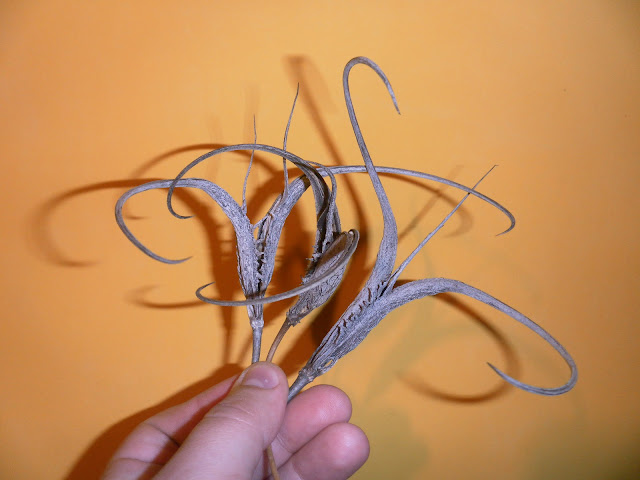
The ripe dry drupelets
There
are numerous seeds inside of a drupelet
I
found one rare 3-clawed drupelet
The
last species (which I have not grown yet) there is P.
spicata (New Mexico
Devil's Claw). Despite the common name it grows only in south-west
Texas and in Mexico. It is the rarest species in wild state – the
scientists do not even know how looks its fruit. It is only known
that the flowers are purple (as P.
fragrans) and pedicels
very short so inflorescence looks as a spike (not as a raceme as in
the case other species).
I
grown also two other species of family Martyniaceae which
belongs to another genus. Ibicella lutea (Yellow
Unicorn Plant) - it is very similar to species in genus
Proboscidea (differs mainly in details of flowers appearance)
annual plant with yellow flowers and fruits similar to P.
louisianica in size and shape but seed-capsule part is covered by
short spines. It germinates always in small per cent and often slowly
but it does not need any pretreatment before sowing.
Ibicella
lutea:
The
flowers are golden-yellow, very ornamental
The
ripening drupelets
The
ripe dry drupelet
The
last species of this family which I grown is
Martynia annua (Devil's Claw, Ice Plant, Tiger's
Claw). There is the only one
species in the genus. It is plant which gave a name to whole family.
This is annual and straight herb - in contrast to other species in
the family (which are rather procumbent). The flowers are very large,
white with pink and yellow spots and fruits are very small, with very
very short claws. Inside of the hard drupelets there are only four
long seeds (in genus Proboscidea
and Ibicella
in fruits there are numerous ones)
which are very difficult to germinating (very susceptible for
rotting and need removing a seed-coat and seed-membrane – as
described below). Martynia
grows in a wild state in Central
America.
Martynia annua:
The dry drupelets and the seeds
This
plant is always straight, not spreading like Proboscidea spp.
The first developing flower
The unripe and ripe drupes
The
ripe dry drupelets
The
fleashy coverings
of a fruit
There
are two South American genus yet which have very similar fruits to
Martynia but differs of it in other features. It is
Craniolaria - with two species: annual - C. annua (Yuca
Escorzonera) which occurs in northern coast of South America and also
Caribbean and tuberous perennial - C. integrifolia (Pico
de Piraba) from South Brazil, Bolivia, Paraguay and
Argentina. In last genus Holoregmia there is only one shrubby
species – H. viscida (unknown
common name) which grows in only in North-East Brazil (state Bahia).
I
am looking for rare species of this family. If you have available the
seeds of them please write to me.












